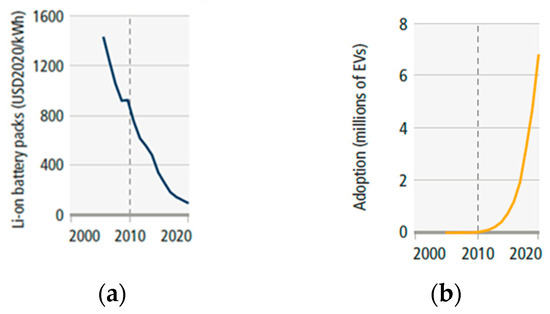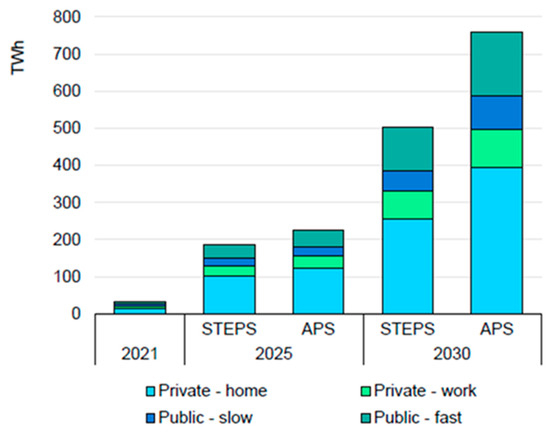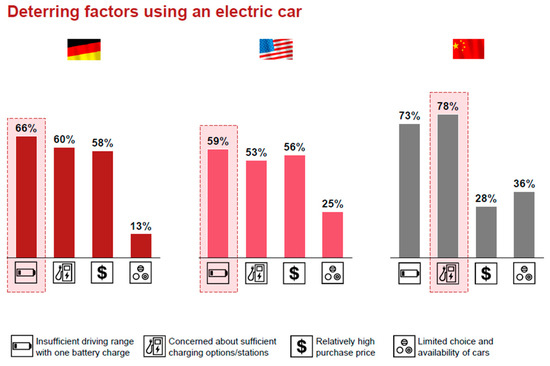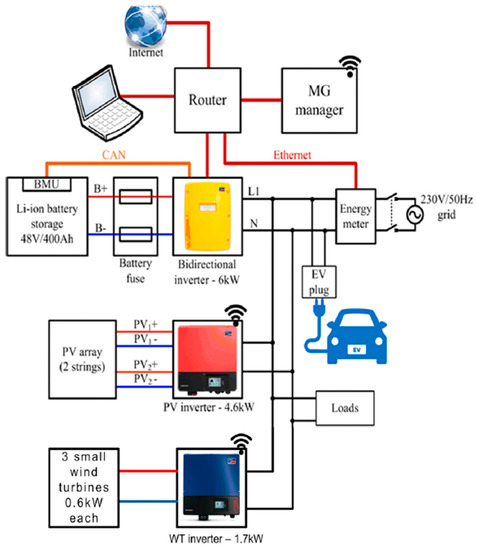You're using an outdated browser. Please upgrade to a modern browser for the best experience.
Please note this is an old version of this entry, which may differ significantly from the current revision.
Subjects:
Engineering, Electrical & Electronic
Charging electric vehicles (EVs) is of great concern both for future vehicle owners and grid operators, with charging at home being the preferred solution by 90% of owners. In addition, the supplied electricity needs to be clean in order to reduce emissions.
- residential charging stations
- residential renewable energy
- smart home
1. Current Needs
Transportation is the second source of GHG emissions worldwide, and it could grow to 65% by 2050 [1] without counter measures to limit it. A number of simulation scenarios indicate that with efficient counter measures, transport sector emissions could be reduced by 68% [1]. Surveys show that citizens are concerned about this, with 97% of Chinese, 70% of Germans, and 52% of US inhabitants intending to change their travel habits [2].
Meanwhile, as the price of Li-ion batteries has decreased, the price of electric vehicles (EVs) has decreased as well. As a result, the increase in EV manufacturing is spectacular, Figure 1, as it has been stimulated, in addition, by government incentives. Further useful evolutions are foreseen and considered important in the years to come.

Figure 1. Correlated evolutions between (a) EV battery prices and (b) number of EVs [1].
According to the EV30@30 scenario, the EV share is expected to be 70% of all vehicle sales by 2030 (where 28% are two/three-wheelers) in China. Almost half of all vehicles sold in 2030 in Europe will be EVs, 37% in Japan, over 30% in Canada and the United States, 29% in India, and 22% on average in other countries [3].
Infrastructure for EV energy supply is going to be the next bottleneck [2]. The electric energy required for charging EVs was computed in [3] to reach almost 640 terawatt-hours (TWh) by 2030 in the New Policies Scenario, Figure 2, and 110 TWh in the EV30@30 scenario.
Such an increase in electricity usage will require governments and energy suppliers to invest in infrastructure.
One important component of this infrastructure is, in the view of potential customers, the charging infrastructure. This aspect is considered important by the political actors. As mentioned in [4], “The US Bipartisan Infrastructure Law provides nearly $5 billion to support establishing a 500,000-station EV charging infrastructure” and “The European Union’s Green Deal, announced in December 2019, targets one million charging points by 2025 to reduce greenhouse gas emissions from transport by 90% compared to 1990 levels”.
Private companies are also trying to take advantage of this business opportunity. As mentioned in [5,6], Shell intends to operate over 500,000 EV charging stations by 2025 and 2,500,000 by 2030.

Figure 2. The electric energy required for charging EVs in the New Policies Scenario [7]. STEPS Stated Policies Scenario; APS Announced Pledges Scenario.
Figure 3 shows how important charging station availability is in the view of EV customers from some large (from the perspective of an EV volume criteria) countries.

Figure 3. Deterring factors of using an electric car in Germany, US, and China [2].
With regard to the placement of charging stations, studies show that charging at home is mostly preferred. According to [7], 90% of chargers will be at home, accounting for about 65% of the energy demand required. Related figures are offered in other studies, such as [8].
2. Technological Developments
Further studies [1] showcase decreases of (85%) in prices for solar energy, (55%) for wind energy, and (85%) for lithium-ion batteries between 2010 and 2019. These decreasing trends are continuous.
Due to these results, applications using the above elements have increased, for example more than ten times for solar and more than 100 times for electric vehicles, when referring to the domains presented in this paper. A case in point is made in the title in reference [9]: “Residential Energy Storage Deployments Skyrocket”. This increase will be followed by “new ways of enabling electric charging systems to fit into electricity grids creating synergistic benefits to grids, improving the value of electric transit, and reducing range anxiety for EV users”, according to [3].
Considering the above developments and the fact that charging at home is mostly preferred, it is easy to understand why the result in [10] is that in 2030 the relative majority of chargers are expected to be within households in the US, with 44% of electricity being consumed by them. To ease the stress on the grid, measures, such as incentives to install charging stations (CSs) and for using renewable energy on site and creating residential microgrids (MGs) with EV charging capabilities, are necessary.
The development of residential charging stations, based on MGs with self-renewable energy sources, will also be stimulated by the significant jump in electricity prices that occurred in 2022.
3. Residential MGs with CSs
It is important, of course, to give a definition of residential EV charging stations based on renewable energy sources and their role. In fact, this represents a residential smart MG (SMG) supplied by renewable sources, with EV charging station capabilities and with or without public access.
The description of the residential smart microgrids with EV charging capabilities can be found in [10], with an illustration of the main components made in Figure 4.

Figure 4. The structure of a residential smart MG supplied by renewable sources with EV charging station capabilities and public access [10].
The renewable energy components, specifically, PV modules and small wind turbines, together with energy storage based on stationary Li-ion batteries and power electronics components, are sourced directly from the market. Such a solution increases the reliability of the MG and reduces the implementation time of the solution.
The SMG has communication capabilities and is able to communicate with the SMG components and with a smart city digital network. The MGG (MG general controller) with energy management system (EMS) or home energy management system (HEMS) software is able to optimise the energy usage according to the weather forecast, the electricity price of the grid, and the EV charging requirements. For the EV charging station with public access, a charging schedule and financial management can be implemented on-line.
This type of AC MG with EV charging is the solution implemented in practice nowadays. It uses PV modules and small wind turbines, energy storage based on stationary Li-ion batteries, mainly after 2017, and power electronics components from the PV market. These components are reliable and proved by experience solutions. The AC MG with EV charging solution is presented and can be found in many papers referenced in this review, [11].
There are several papers presenting and discussing DC MG solutions [12,13,14,15,16,17], but the DC MG remains a niche as the market does not offer equipment under reasonable conditions (price, availability). The situation is rather counterintuitive, as PVs and EVs and storage batteries are DC components, and the small wind turbine’s output is in DC, too. However, until the main grid remains AC, Edison loses again.
This entry is adapted from the peer-reviewed paper 10.3390/en16010179
This entry is offline, you can click here to edit this entry!
